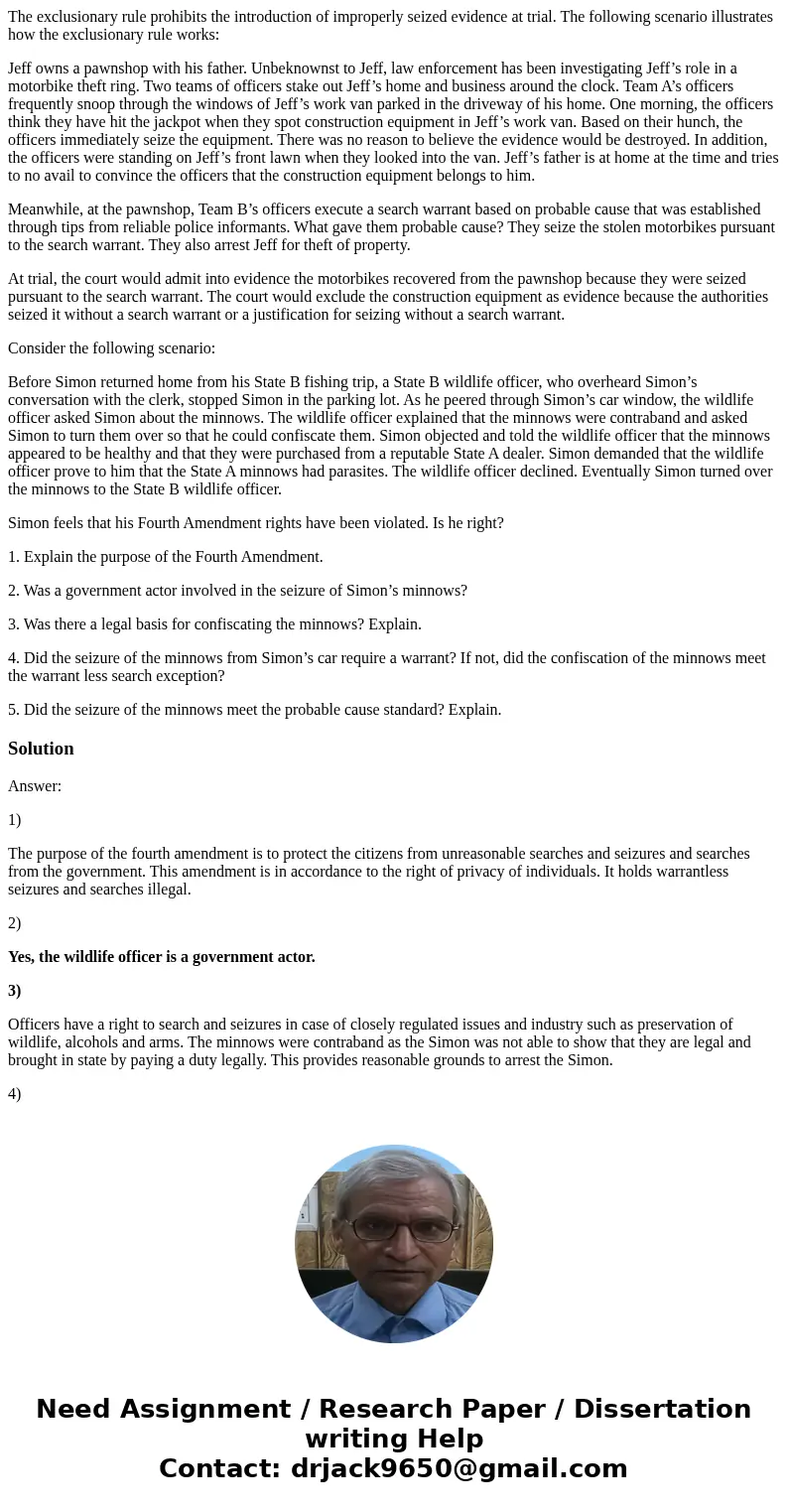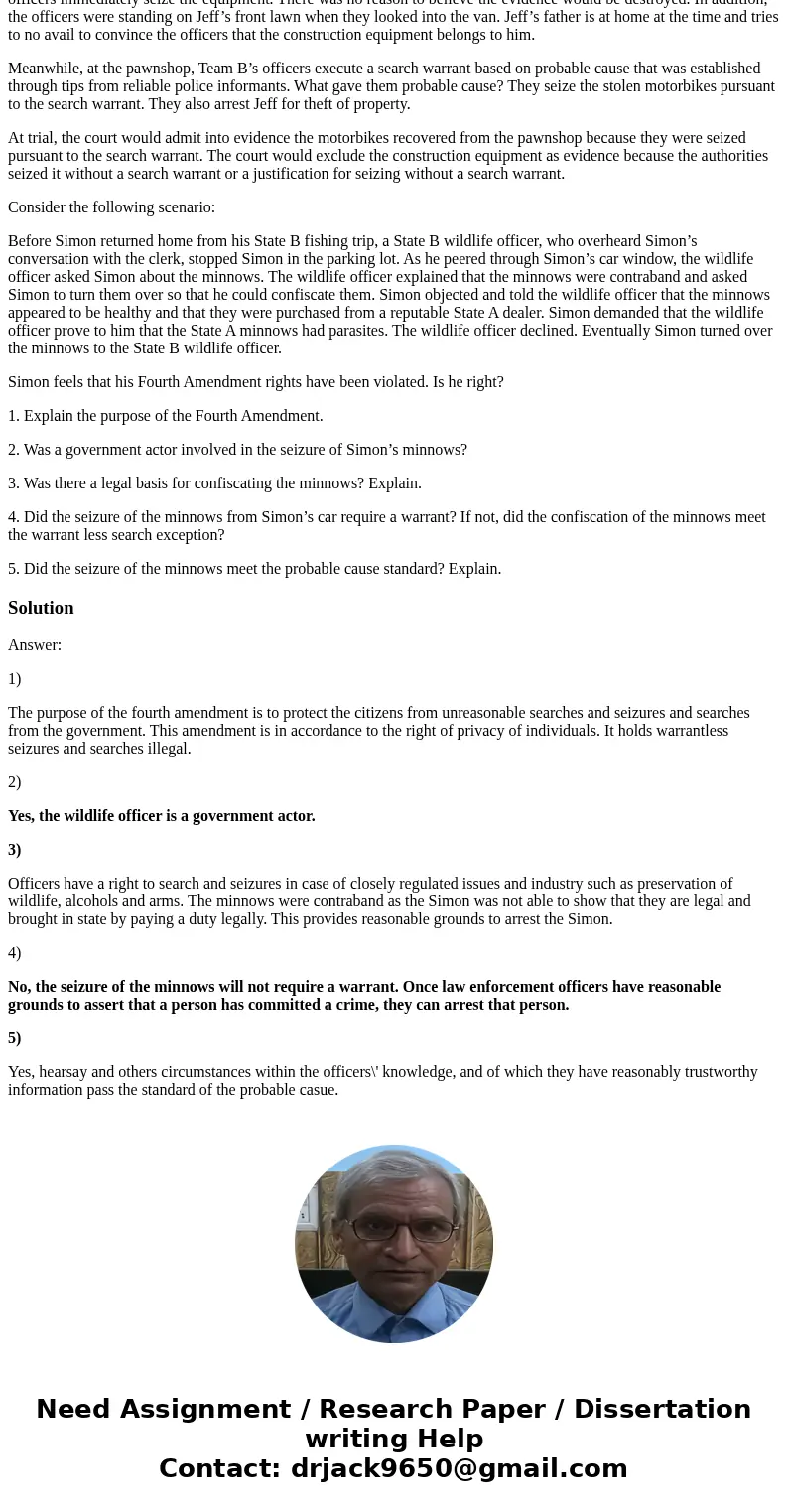The exclusionary rule prohibits the introduction of improper
The exclusionary rule prohibits the introduction of improperly seized evidence at trial. The following scenario illustrates how the exclusionary rule works:
Jeff owns a pawnshop with his father. Unbeknownst to Jeff, law enforcement has been investigating Jeff’s role in a motorbike theft ring. Two teams of officers stake out Jeff’s home and business around the clock. Team A’s officers frequently snoop through the windows of Jeff’s work van parked in the driveway of his home. One morning, the officers think they have hit the jackpot when they spot construction equipment in Jeff’s work van. Based on their hunch, the officers immediately seize the equipment. There was no reason to believe the evidence would be destroyed. In addition, the officers were standing on Jeff’s front lawn when they looked into the van. Jeff’s father is at home at the time and tries to no avail to convince the officers that the construction equipment belongs to him.
Meanwhile, at the pawnshop, Team B’s officers execute a search warrant based on probable cause that was established through tips from reliable police informants. What gave them probable cause? They seize the stolen motorbikes pursuant to the search warrant. They also arrest Jeff for theft of property.
At trial, the court would admit into evidence the motorbikes recovered from the pawnshop because they were seized pursuant to the search warrant. The court would exclude the construction equipment as evidence because the authorities seized it without a search warrant or a justification for seizing without a search warrant.
Consider the following scenario:
Before Simon returned home from his State B fishing trip, a State B wildlife officer, who overheard Simon’s conversation with the clerk, stopped Simon in the parking lot. As he peered through Simon’s car window, the wildlife officer asked Simon about the minnows. The wildlife officer explained that the minnows were contraband and asked Simon to turn them over so that he could confiscate them. Simon objected and told the wildlife officer that the minnows appeared to be healthy and that they were purchased from a reputable State A dealer. Simon demanded that the wildlife officer prove to him that the State A minnows had parasites. The wildlife officer declined. Eventually Simon turned over the minnows to the State B wildlife officer.
Simon feels that his Fourth Amendment rights have been violated. Is he right?
1. Explain the purpose of the Fourth Amendment.
2. Was a government actor involved in the seizure of Simon’s minnows?
3. Was there a legal basis for confiscating the minnows? Explain.
4. Did the seizure of the minnows from Simon’s car require a warrant? If not, did the confiscation of the minnows meet the warrant less search exception?
5. Did the seizure of the minnows meet the probable cause standard? Explain.
Solution
Answer:
1)
The purpose of the fourth amendment is to protect the citizens from unreasonable searches and seizures and searches from the government. This amendment is in accordance to the right of privacy of individuals. It holds warrantless seizures and searches illegal.
2)
Yes, the wildlife officer is a government actor.
3)
Officers have a right to search and seizures in case of closely regulated issues and industry such as preservation of wildlife, alcohols and arms. The minnows were contraband as the Simon was not able to show that they are legal and brought in state by paying a duty legally. This provides reasonable grounds to arrest the Simon.
4)
No, the seizure of the minnows will not require a warrant. Once law enforcement officers have reasonable grounds to assert that a person has committed a crime, they can arrest that person.
5)
Yes, hearsay and others circumstances within the officers\' knowledge, and of which they have reasonably trustworthy information pass the standard of the probable casue.


 Homework Sourse
Homework Sourse